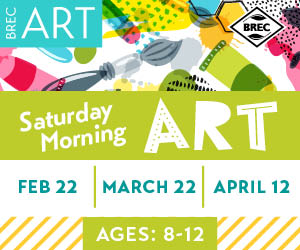Disclaimer: This post is sponsored by Children’s Hospital Pediatrics of Baton Rouge.
 ADHD affects up to 12% of school age children and is 3 times more likely to affect boys than girls. Researchers believe that children with ADHD have abnormally low levels and imbalances of certain neurotransmitters, the chemicals that carry messages between brain cells.
ADHD affects up to 12% of school age children and is 3 times more likely to affect boys than girls. Researchers believe that children with ADHD have abnormally low levels and imbalances of certain neurotransmitters, the chemicals that carry messages between brain cells.
Now what?
A visit to your pediatrician can help clarify the situation. Attention deficit hyperactivity disorder (ADHD) is the term used as a diagnosis for children whose behavior tends to be characteristically impulsive, inattentive, or a combination of both. The diagnosis usually requires that the symptoms be present for at least six months and before age seven, be evident in various situations and more intense than usually seen in other children of the same age and gender. There are standard guidelines developed by the American Academy of Pediatrics that your pediatrician will use to determine whether your child has ADHD. There is no single test for ADHD. The process requires several steps and involves gathering a lot of information from multiple sources. You, your child, the school and other caregivers should be involved. Your pediatrician will also do a physical exam, neurological exam, psychological screening, and vision and hearing tests in order to rule out other conditions that may be responsible for your child’s behavior.
How is ADHD treated?
The most effective treatments are tailor-made for each individual child and may include medication, behavior therapy, education, target outcomes, team work and even family counseling. For most children, stimulant medications are a safe and effective way to relieve ADHD symptoms. Just like putting on glasses helps people to focus their eyes to see, these medications help children with ADHD focus their thoughts better, ignore distractions, and control their behavior. Studies show that about 80% of children with ADHD who are treated with stimulants improve once the right medication and dose are determined.
There are short, intermediate and long-acting medications. Your doctor can determine which is right for your child. It may take some time to find the best medication, dosage and schedule. Non-stimulant medications are considered second-choice treatments, but there are situations where they may be appropriate.
What about alternative treatments?
At this time there is no scientifically proven cure for this condition. The following methods need more scientific evidence to prove their merit and are therefore not recommended: megavitamins and mineral supplements, treatment for candida yeast infections, EEG feedback, applied kinesiology, reducing sugar consumption, and optometric vision training.
What about my child’s future?
Working together with teachers, caregivers and other family members to stay on track with recommended treatments, your child can be successful both in and out of the classroom. Although ADHD continues into adulthood, taking time to develop the child’s strengths, structure their environment, and use medication when needed, can lead to a very productive and happy life for your child!
About the Author
Pam Shr

Pam is a Board Certified Pediatric Nurse Practitioner who has practiced in the Baton Rouge area for 21 years. She’s the mother of 3 teenagers who keep her quite busy! Pam provides care for newborns through college age kids, offers breastfeeding support as a breastfeeding educator, as well as treats ADD/ADHD. As an expert in her field, she is recognized as a primary care provider for most insurance plans and practices independently at her clinic in Baton Rouge. She works alongside pediatric specialists at the Children’s Hospital Outpatient Clinic allowing easy access to all the services that Children’s Hospital has to offer.
Disclaimer: The information contained in this blog post is for networking and informational purposes only, and should not be used to replace the relationship that exists between you and your child’s healthcare provider. Please contact your healthcare provider for specific medical advice and/or treatment recommendations.
















